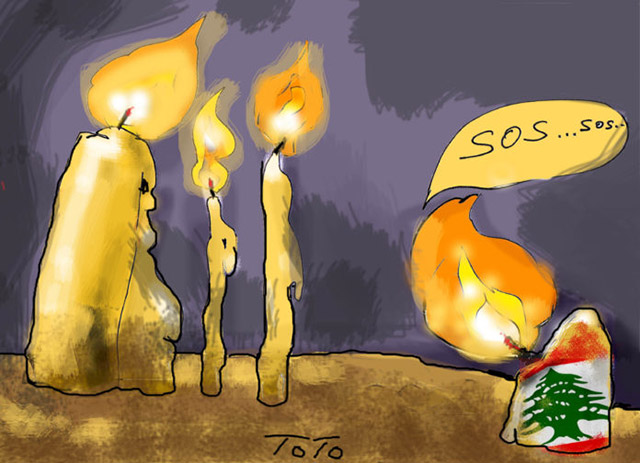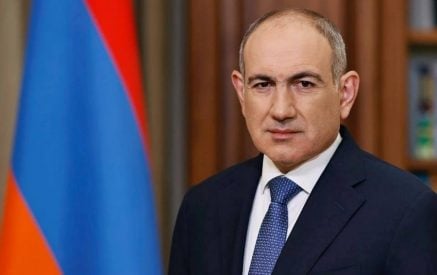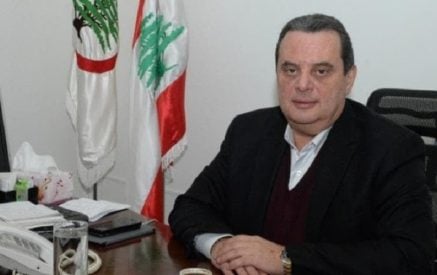by Edmond Y. Azadian
For many years, Lebanon was considered an idyllic country, a veritable heaven on earth, because of its natural beauty and freewheeling society offering luxury and a vibrant nightlife. Lebanon was the destination of choice in the Middle East, with petrodollars pouring in with tourists, a free banking system and many peepholes for all kinds of spies to watch the developments in neighboring countries.
The original Lebanese population were the Phoenicians, a seafaring people who had colonies in North Africa, like Carthage. Carthage had become so powerful that it drove fear in the hearts of the Roman emperors to the extent that the Roman orator and censor Cato concluded all his speeches with the call “Carthage must be destroyed,” and indeed it was destroyed by the third Punic War in 146 BC.
Read also
In the tradition of their seafaring ancestors, Lebanese citizens have emigrated to faraway lands to form communities in Africa and South America, contributing generously to their native land.
Thus, like Armenians, the numbers of the Lebanese diaspora exceed the population back home. Before the recent crisis, Lebanon’s population was six million, with the diaspora estimated to be between four and 14 million.
Lebanon turned out to be one of the most hospitable safe havens for Armenian refugees after the Armenian Genocide. The Armenian population there at its peak was 250,000 strong. In the year 2009, the Armenian population had fallen to 112,000 and today it has further shrunk to 40,000. But no community can loudly voice its true numbers, because the Lebanese political system is based on religious communities and 18 confessional groups have their proportional representation in the Lebanese parliament. Therefore, if the community admits its numbers have shrunk, it loses representation in parliament. Currently the Armenian community is represented by six members of parliament.
Since Lebanon gained independence in 1943, on a 4,036-mile territory, many of the regional conflicts have caused upheaval there.
The Lebanese people are amazing survivors; after each conflict they have come together under the slogan of “no winners and no losers” and begin to reconstruct the country. In order to analyze Lebanon’s current crisis and predicament, one has to broaden the scope and review the regional developments to find out their fallout in Lebanon.
Most of the turbulence in the Middle East stems from the Israeli-Palestinian conflict, when Israel declared its independence in 1948. Later on, that conflict degenerated to give way to other conflicts which ended up having their own lives.
The Arab countries, particularly Egypt and Syria, were motivated to destroy Israel and push out its population into the sea. Until the Yom Kippur War of 1973, Jordan controlled the West Bank and East Jerusalem, while Egypt controlled the Gaza Strip.
Rather than proclaiming the Palestinian state on those territories, they had set their minds on destroying Israel. For Israel, all wars, despite painful losses, were ironically welcomed because each conflict ended up with territorial gains. Thus, during the 1973 war Egypt lost Gaza and most of the Sinai Peninsula; Jordan lost East Jerusalem and the West Bank; Syria lost its most fertile land and strategic region of Golan Heights.
Ever since, the Arab countries have come to accept Israel’s right to exist, except Hamas, and they have been negotiating for a two-state solution, hoping to take back the West Bank and the Gaza Strip to form a Palestinian state.
The Israeli-Palestinian conflict drove many Palestinians to Arab countries as refugees, creating social, political and military problems for those lands. Palestinians in Lebanon organized and became a government within the government, irritating local Christians and threatening Israel.
Arab anger stems from the Israeli treatment of the Palestinians. To divert that ire, the US and Israeli political planners resorted to a new tactic, trying to convince the Arabs that the enemy is Shia Iran rather than Israel. This is how religious strife in the region was born. Saudi Arabia was assigned the leadership of the Sunni Arabs because it was the protector of the holy sites of Islam in Mecca and Medina. Few knew that Recep Tayyip Erdogan’s Turkey would emerge as the defender of the Palestinian Cause and the leader of the Sunni world, taking the wind out of the Israeli-US policy planners’ sail.
The major Lebanese Civil War began in 1975 and lasted until 1989, ending with a power-sharing agreement signed in Taif, Saudi Arabia, under the auspices of the Arab League.
In that devastating war, the Lebanese Muslims sided with the Palestinians against the Christians. The Lebanese army split along confessional lines and warlords in both camps took the destiny of the people in their own hands. In 1982, the Israeli Army marched through Lebanon, all the way to Beirut, and destroyed the infrastructure of the Palestinian forces. But the strife continued until 1989 when peace was restored and Syria took over the security of the country.
Armenians who had taken sides in an earlier conflict in 1958, losing 200 young men, decided to adhere to the policy of “positive neutrality,” angering the Christian militias.
In the ensuring years, many countries in the region and in the West helped Lebanon to rebuild. The US deliberately kept the Lebanese forces under-armed, so as not to defy the Israeli hegemony in the region. That gave rise to an alternative force — Hezbollah — serving as a proxy for Iran. Although Hezbollah is considered a terrorist organization in the West, in Lebanon it has also built its political infrastructure and has 14 members in parliament out of 128 seats.
Ever since Hezbollah’s emergence, the tug of war is continuing in the Lebanese political landscape, with the US and Israel trying to destroy that party and Iran arming and supplying it. The Lebanese people are caught in the middle. Saudi Arabia, the main benefactor of Lebanon, has discontinued any help at the behest of its overlords in Israel and the US, stifling Lebanon’s economy.
Hezbollah is considered to have 25,000 fighters in its ranks, with state-of-the-art weaponry. It has repelled Israeli incursions in Lebanon many times and at times it has dented the myth of invincibility of the Israeli Defense Forces.
In the recent couple of years, Lebanon’s political life has been at a standstill, paralyzing all government functions. Saudi surrogates in Lebanon have been trying to push Hezbollah out of the political scene but the latter is so entrenched that no government can be formed without its approval.
After many months of a caretaker government at the helm, finally Sunni Muslim Najib Mikati formed a new government, offering hope to some but leaving the majority despondent and seeking refuge in countries around the world. Their chagrin may be earned, as the billionaire Mr. Mikati was just recently named in the Pandora Papers as one of the world leaders who has squirreled away millions in secret off-shore accounts.
By World Bank estimates, it will take 19 years for Lebanon to recover from its current crisis. The World Bank also considers that Lebanon’s crisis is among the top three worst crises the world not seen in the last 150 years. And according to the United Nations, the situation is “a living nightmare.”
According to UN estimates, 78 percent of the population is living below the poverty line, with the threat of starvation looming large.
There is no running water, no electricity, no municipal services. Many hospitals, which depend on generators, need fuel which is hard to find. In fact, this past weekend, the entire country lost power for 24 hours, with both main power plants grinding to a halt due to a lack of fuel. In the previous months, electricity has been available for two hours a day only.
Iran has pledged to send fuel to Lebanon but the latter will fall under US sanctions against Iran if it accepts its gift. This fuel shortage has lasted for 18 months and it is still continuing. There is a mass exodus from the country. In recent months, 2,000 doctors and 1,500 nurses have left the country, dealing a near-fatal blow to the healthcare system which is on the brink of collapse.
The banking system is under a strain. Those citizens who had made deposits in US dollars cannot withdraw their savings unless they agree to receive them in Lebanese pounds, a currency that is currently in a freefall, having already lost 90 percent of its value. At this time, there are three exchange rates for the US dollars. The first two are considered the official rates and the third one is the black market rate. The official government exchange rate is 1,500 Lebanese pounds to $1, the second semi-official exchange rate is 3,900 LL to the dollar while the black market rate is 25,000 to the dollar.
Citizens cannot figure out how they can survive.
As if these crises were not enough, last August a huge explosion in the port district devastated the capital, causing $15 billion worth of damage, and leaving 300,000 people homeless.
Bourdj Hammoud, a suburb of Beirut, was called “Little Armenia.” Municipality and all services were run by Armenians. There is also an exodus of Armenians leaving the country. But with Covid and the world refugee problems, very few countries are charitable enough to taken in those destitute refugees. The first choice is Armenia and there is already a “Little Lebanon” in Yerevan, replacing Beirut’s “Little Armenia.”
The world Armenian community has invested tremendous amounts of resources in the community structure in Lebanon. All three Christian religious denominations have their churches, schools, sports and social centers there.
It looks as if the emigre Armenian history has begun to repeat itself — India, Egypt and many other countries were left with empty churches and institutions as the Armenian communities left due to circumstances outside their control.
Is the Armenian community destined to live that way?
Will Lebanon rise again under the optimistic slogan “no winners, no losers?” We can only pray it does.

























































